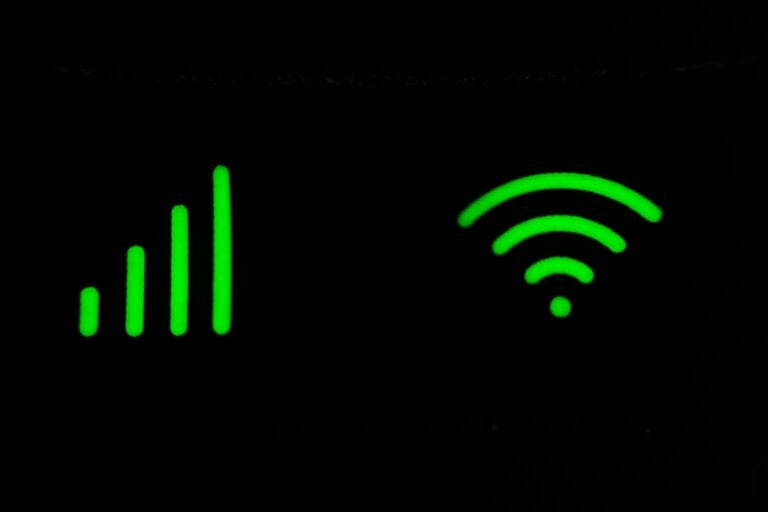What is tethering, and how does it work?
Tethering lets you share mobile data from your phone via a hotspot, USB, or Bluetooth, allowing you to keep multiple devices connected at once.
Need to get online but can’t find a WiFi hotspot anywhere? Tethering can help you connect multiple devices to the internet from your phone or get internet access from a friend, no matter where you are. Follow along to learn all about tethering, how it works, and how you can use it.
What is tethering?
Tethering is the act of sharing your phone’s internet connection to other devices, such as laptops, tablets, and other phones. When tethered via hotspot, USB, or Bluetooth, other devices are able to get online using mobile data from your phone.
How does tethering work?
Depending on the type of tethering you’re using, it either turns your mobile device into a mobile hotspot or allows you to share data via a wired connection. You can either share mobile data from your cellular plan or the internet from your WiFi network to the connected device.

Types of tethering
There are several types of tethering, each different in how they share the internet connection as well as the speed and quality of the connection. Here’s how they differ from one another:
Hotspot tethering
Hotspot tethering is also often referred to as a mobile hotspot, personal hotspot, or WiFi hotspot. This type of tethering turns your mobile device into a WiFi hotspot by creating a WiFi network.
Any device with WiFi capability can then locate your hotspot network and connect to it just as they would with any other WiFi network. It also allows you to tether multiple devices at once. You can set the name and password for your hotspot to make sure it’s easy to find and secure enough that strangers don’t connect to it.
Bluetooth tethering
Bluetooth tethering allows you to share an internet connection via Bluetooth instead of WiFi. It’s not as popular as hotspot tethering because it’s typically slower, less reliable, and requires the devices to be closer to one another for the connection to work.
USB tethering
USB tethering allows you to share an internet connection with another device via a wired connection. This typically involves a USB-C or USB cable, with one end connected to your device and the other to the device you’re sharing the connection with.
This is the fastest and most secure type of tethering. The wired connection allows for a faster data transfer and ensures no unwanted devices can connect to the network. It’s also the least convenient, since devices need to be connected via a cable at all times for the tether to work.
How to enable tethering on iPhones
You can enable hotspot tethering on your iPhone and start sharing your data connection by following these simple steps:
- Go to Settings.
- Open the Personal Hotspot settings menu.
- Toggle the Allow Others to Join option to the on position.
- Share the WiFi password that’s displayed on your screen with anyone you want to share the connection with.
With that done, your personal hotspot should become visible to all devices with WiFi capabilities, and they can stay connected as long as they’re within reach of the network. To stop sharing your connection, simply toggle the Allow Others to Join option to the off position.

How to enable tethering on Android phones
The process of tethering Android devices to another device is fairly similar.
- Go to Settings.
- Open the Networks and Internet settings menus.
- Tap on Hotspot, then Tethering.
- Choose WiFi Tethering and turn on the hotspot. Your network name and password should be displayed on the same page.
Keep in mind that the exact steps can differ slightly depending on the make and model of your Android phone and the version of your operating system.

Pros and cons of tethering
Tethering is a quick and easy way to share your phone’s data connection with multiple devices. That said, the pros of cons of tethering should still be considered before using it. Let’s take a closer look at the main advantages and disadvantages of tethering.
| Pros | Cons |
|---|---|
| Convenience — you can share mobile internet anywhere you go as long as you have decent cell coverage. | Data usage — sharing your mobile data with other devices often results in increased data usage and can quickly run out your data limit if you’re not on an unlimited plan. |
| Security — you can set up your own password and control when you want to share the connection, making it more secure than public hotspots. | Speed — a tethered connection is typically slower than simply using the mobile data on your phone. That’s because sharing the internet adds one more step in the connection process. |
| Multiple devices — you can connect multiple devices at once with wireless tethering, making it a great solution for working on the go or keeping your friends connected. | Battery usage — your phone needs more energy once you enable tethering, which results in your battery running out of charge faster. |
What’s the difference between hotspot and tethering?
Hotspot and tethering are often used interchangeably, but they’re not exactly the same thing and should not be confused. A hotspot is essentially any WiFi network that you can connect to. Since hotspot tethering creates a WiFi network, it’s also a type of hotspot, but so are public WiFi networks, such as the ones you find at cafes, restaurants, and hotels.
USB and Bluetooth tethering are not hotspots because they don’t create a WiFi network but share the internet connection via a USB cable or Bluetooth instead.
Connect multiple devices with Holafly
Tethering requires a reliable internet connection, and Holafly offers exactly that. All Holafly travel eSIM plans allow you to share data, with a hotspot sharing limit of 500 MB or 1 GB per day, depending on the plan. On top of that, you get unlimited data with all plans, so you’re sure you’ll have mobile internet on your phone, even once you reach the tethering limit.
If you’re looking for a long-term option, Holafly Connect is an eSIM subscription that offers unlimited hotspot sharing with the unlimited plan and 25 GB of sharing with the 25 GB plan. This allows you to keep as many mobile devices connected as long as you need. Use it to stay online and keep others connected anywhere in the world. No long-term contracts or commitments needed.





 Language
Language 


















 No results found
No results found












